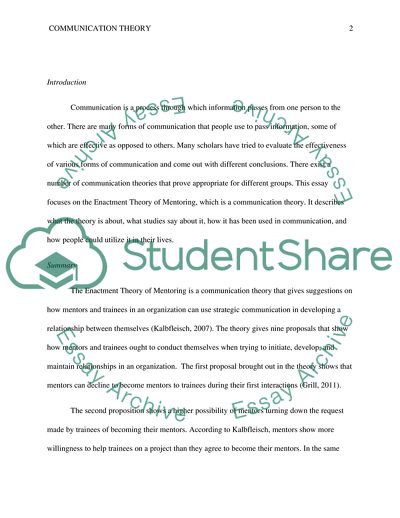Cite this document
(Enactment Theory of Mentoring Report Example | Topics and Well Written Essays - 1500 words - 1, n.d.)
Enactment Theory of Mentoring Report Example | Topics and Well Written Essays - 1500 words - 1. https://studentshare.org/journalism-communication/1805050-theory-paper-about-the-enactment-theory-of-mentoring-kablfleisch
Enactment Theory of Mentoring Report Example | Topics and Well Written Essays - 1500 words - 1. https://studentshare.org/journalism-communication/1805050-theory-paper-about-the-enactment-theory-of-mentoring-kablfleisch
(Enactment Theory of Mentoring Report Example | Topics and Well Written Essays - 1500 Words - 1)
Enactment Theory of Mentoring Report Example | Topics and Well Written Essays - 1500 Words - 1. https://studentshare.org/journalism-communication/1805050-theory-paper-about-the-enactment-theory-of-mentoring-kablfleisch.
Enactment Theory of Mentoring Report Example | Topics and Well Written Essays - 1500 Words - 1. https://studentshare.org/journalism-communication/1805050-theory-paper-about-the-enactment-theory-of-mentoring-kablfleisch.
“Enactment Theory of Mentoring Report Example | Topics and Well Written Essays - 1500 Words - 1”. https://studentshare.org/journalism-communication/1805050-theory-paper-about-the-enactment-theory-of-mentoring-kablfleisch.


